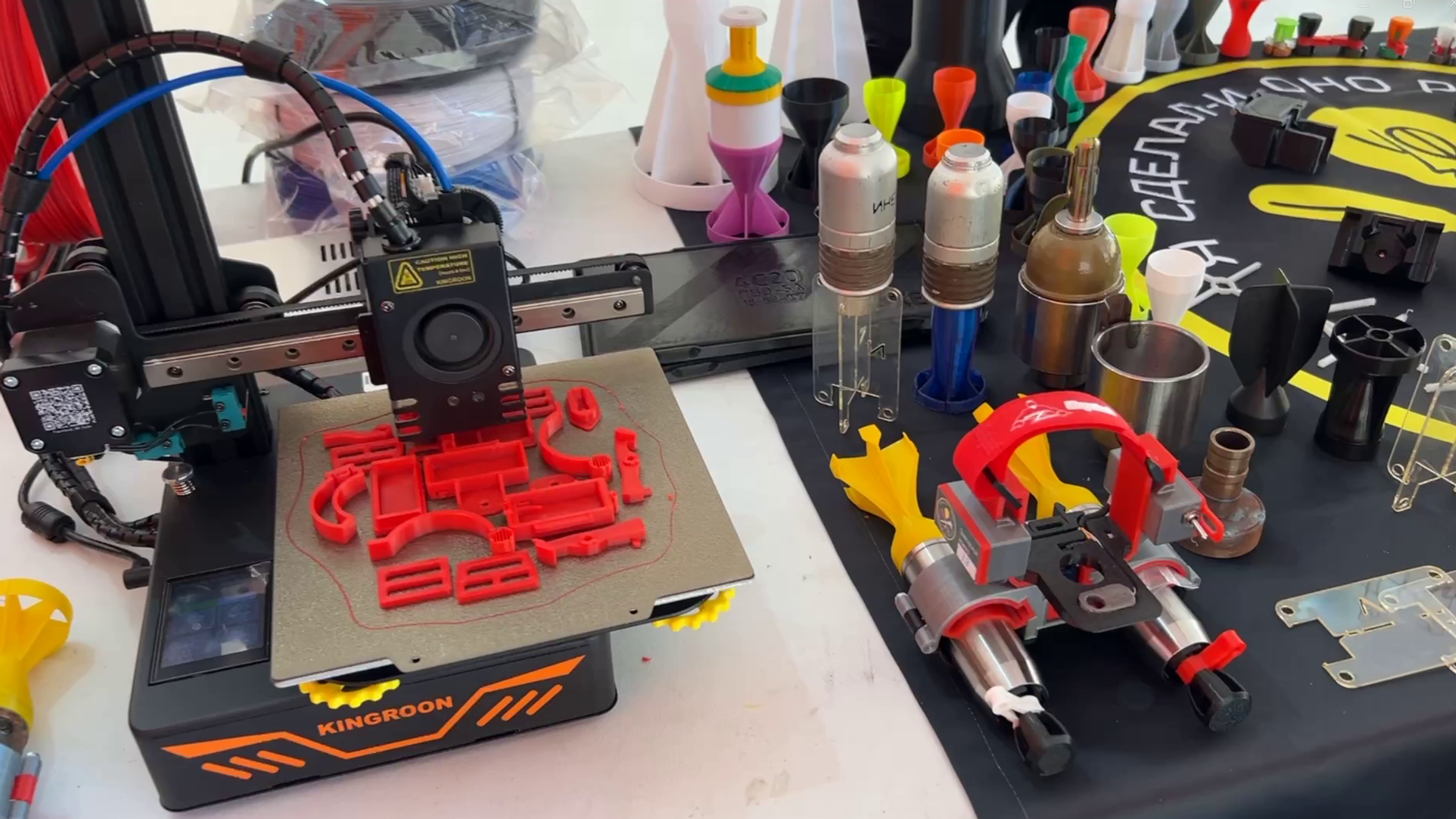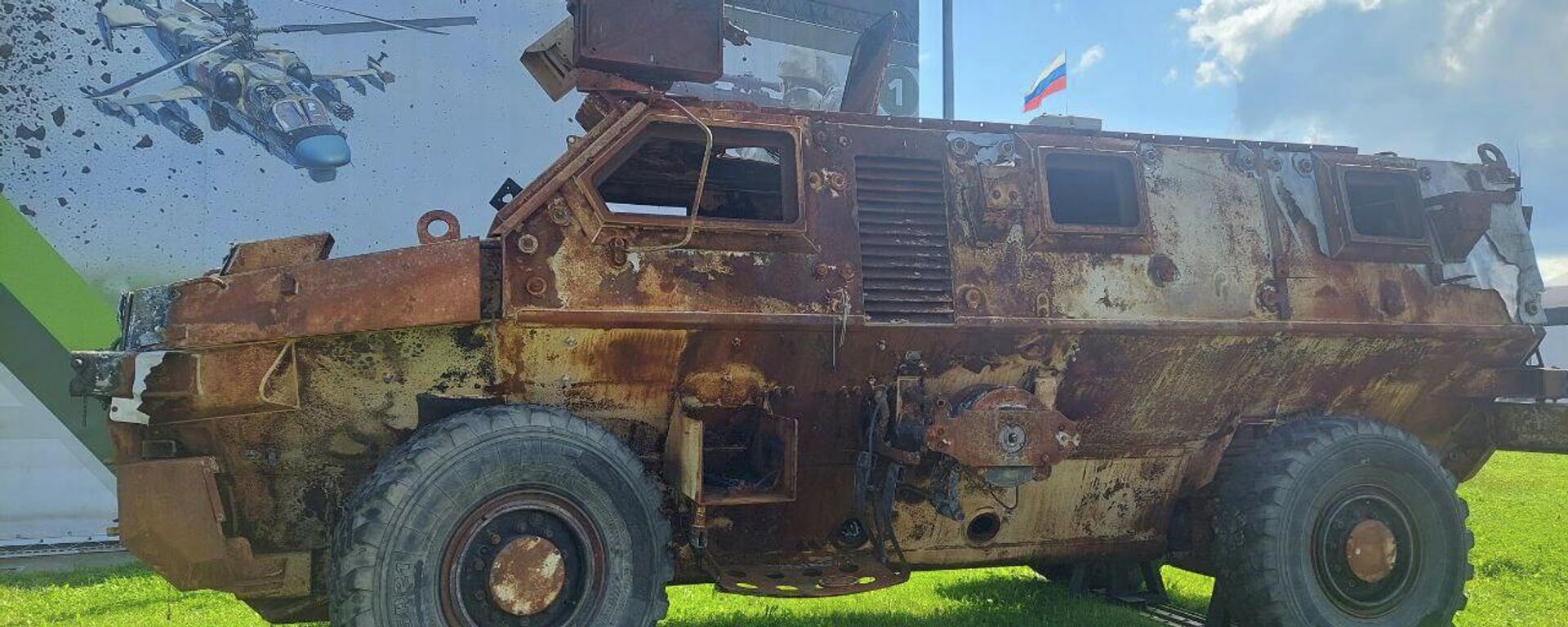Russian Ingenuity: How Volunteers Create Medical Equipment, Bomb Parts for the Front
16:43 GMT 16.08.2023 (Updated: 12:55 GMT 17.08.2023)

© Sputnik / Stringer
Subscribe
The Ukraine proxy war, in which Russia has faced off against the combined military and economic might of NATO, has consumed hundreds of millions of artillery and mortar rounds, missiles and other munitions. To help keep Russian forces well-supplied and equipped, volunteers have joined forces to assist the front in the best way they know how.
Umeltsy Frontu (roughly translating as “From Craftsmen to the Front”) is a 600 person-strong volunteer group hailing from over 100 Russian cities that produces a variety of homemade equipment for the Russian army – from drone-dropped bomb components to ammunition containers, first aid kit boxes and more.
“Our community basically engages in distributed manufacturing. This is a collective of volunteers who print or create in one way or another a variety of special-use components which we provide for free to our troops on the front lines,” From Craftsmen to the Front representative Semyon Dirin told a Sputnik correspondent on the sidelines of the ongoing Army-2023 military forum and expo in Moscow region.
Dirin says the group has been engaged in its cottage industry-style production for nearly a year now, forming in October 2022 after partial mobilization was declared.
“What we engage in is real distributed manufacturing, meaning that even if someone wanted to strike out at us, it would be difficult,” the volunteer explained, pointing to the group’s dispersed operations.
“We create special-purpose products for medical and military use. For example, in the area of medicine, we make all kinds of cases to transport Nefopam [a non-opioid-based painkiller, ed.] ampoules, cases for syringes, pill boxes, in short everything to make it more comfortable for our military medics to work on the front, save lives and evacuate the wounded,” Dirin noted.
When it comes to weapons and weapons components, the volunteer pointed to the manufacture of cases for electronic detonators, gear designed to speed the reloading of small arms ammunition cartridges, custom-made plastic bases for launching quadcopter drones, and bomb-dropping devices, including tail and initiator cap components which can turn ordinary AGS-17 grenades into drone-droppable munitions.
“We use ordinary household 3D printers and plastics. Incidentally, since the start of the military operation, a lot of Russian producers of plastics have popped up, and it’s much cheaper and higher quality to buy domestically. Along with printers, some volunteers have lathes, laser machines, engraving and milling machines,” Dirin explained, with volunteers printing, soldering, lathing etc. to produce whatever components they can.
The craft industry has included efforts by volunteers to improve the production process, in part based on the feedback of the troops. “We have a lot of engineers who during their free time create blueprints for all these parts, make measurements, provide feedback. We have an entire section dedicated to teaching those joining us.”
The volunteers receive orders from troops, decide who will create the requested components or equipment and in what timeframe, and deliver the finished goods to troops in the field, sometimes with the help of local shipping companies.
The production of individual components varies dramatically depending on complexity – from 7-12 minutes for simple items like bomb tail caps to 15 hours for complex components with multiple moving parts or which require finishing.
Dirin said reviews of the equipment by frontline troops definitely “motivates” the volunteers.
“First of all, we receive words of recognition and gratitude. And second, we get invaluable feedback, which was limited at first…We started going to the front ourselves. We have volunteers who travel to the front and speak to the troops directly. I was in Lugansk four times, and we transferred a large parties of components. We get feedback, and if necessary make changes in the design,” the volunteer summed up.



